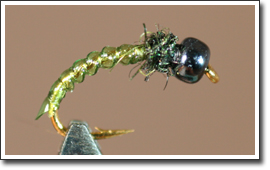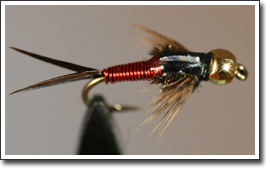Fly Fishing Nymphs & Wet Flies for Sale
Showing 17–28 of 28 results
-

Gordies Two-Tone Worm
$1.50 Add to cart -

Green Lunar Midge™
$1.75 Select options This product has multiple variants. The options may be chosen on the product page -

Quill Gordon Orange Scud
$1.75 Select options This product has multiple variants. The options may be chosen on the product page -

Quill Gordon Pink Scud
$1.75 Select options This product has multiple variants. The options may be chosen on the product page -

Red Copper John
$1.95 Select options This product has multiple variants. The options may be chosen on the product page -

Red Lunar Midge™
$1.50 Select options This product has multiple variants. The options may be chosen on the product page -

Standard Black Baetis Nymph
$1.75 Add to cart -

Standard Copper John
$1.95 Select options This product has multiple variants. The options may be chosen on the product page -

Standard Olive Baetis Nymph
$1.75 Add to cart -

Standard PMD Nymph
$1.95 Select options This product has multiple variants. The options may be chosen on the product page -

Standard Twinkle Tail™ Nymph
$1.75 Add to cart -

The Crusader
$1.75 Select options This product has multiple variants. The options may be chosen on the product page
Attractor Nymphs
Attractor nymphs don’t imitate a specific type of insect, but their pattern is used to attract fish. Attractors are typically adorned with colorful materials to get a trout’s attention. This can be particularly useful when trying to lure fish closer to the surface.
Caddis Pupae & Larvae
Caddis pupae and caddis larvae are often used in wet fly-fishing patterns since caddis in the early stages of their lifecycle often populate bodies of water where trout can be found (and in large numbers at that). Some of the caddis larvae can also swim freely, meaning fly fishers can use movement to attract fish.
Crustaceans & Worms
Although they only make up a small number of fly-fishing patterns, crustaceans (think shrimp or crayfish) and worms make effective bait in specific locations and during certain seasons. One benefit of using crustaceans and worms in patterns is that they don’t often require much strategy beyond bouncing them beneath the water.
Mayfly Nymphs
Just as adult mayflies are among the most common trout food found in bodies of water, mayflies in the nymph stage are also regularly found beneath the surface. This means using mayflies in wet patterns is bound to attract fish. (In fact, many times they’ll even go for the mayfly over another type of insect.)
Emergers
Emergers mimic various types of insects — mayflies, caddis flies, and midges included — that are at the hatching stage. As their name implies, these insects would be emerging from a body of water, floating just near the surface and attracting trout with their movements.
Midge Pupae & Larvae
Wet patterns that imitate midges in the larvae stage are effective year-round because larvae tend to drift in the water even during the colder seasons, becoming an important food source for trout when other insects aren’t around.
Stonefly Nymphs
Stonefly nymphs tend to populate the bottoms of streams, which is where larger fish spend their time. Anglers looking for wet patterns to attract big fish will want to keep stonefly nymphs on their radar.
Take a look at the wet fly options we have to offer, and contact Quill Gordon today with any inquires you may have.












